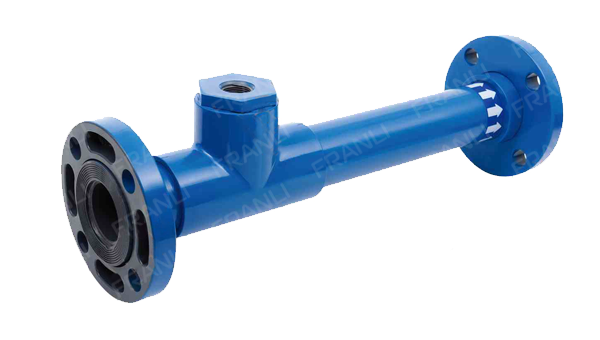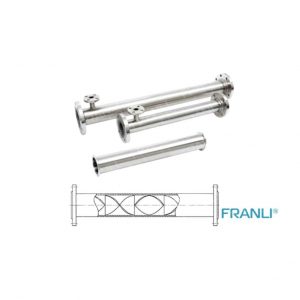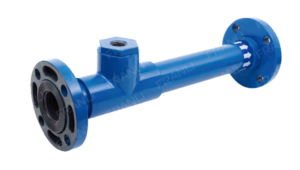Home » Application of Static Mixer Tubes in various industries
Application of Static Mixer Tubes in various industries
Static Mixer Tube
A Static Mixer Tube is an essential component in the process industry, with applications ranging from chemical processing to wastewater treatment. The technology utilizes a series of stationary, internal elements that mix fluids by a combination of controlled turbulence and laminar flow. This
Application: Its application industries include chemical, petroleum, pharmaceutical, pesticide, food, plastic, daily chemicals, mining and metallurgy, papermaking, chemical fiber, cable, biology, environmental protection, etc.
Application of Static Mixer Tubes in various industries mechanism creates a more uniform, homogenous fluid mixture compared to traditional mixing methods, increasing efficiency and reducing production costs.
Chemical Processing
Static Mixer Tubes have widespread applications in the chemical processing industry. They are used to mix chemicals with a high degree of accuracy and precision, ensuring that the final product has the desired properties. The technology is used in processes such as emulsification, homogenization, dispersion, and gas-liquid contact. Static Mixer Tubes are also commonly used in the production of polymers, where consistent temperature and flow rates are essential to maintain product quality.

Water Treatment
Water treatment plants use Static Mixer Tubes to ensure that water is adequately mixed with chemicals for accurate disinfection and pH control. Due to its high degree of mixing efficiency, Static Mixer Tubes are also used for coagulation and flocculation applications, where they increase the rate of particle collision, increasing the efficiency of these processes. The use of Static Mixer Tubes in wastewater treatment is also becoming more common to improve the quality of treated water and reduce the chemical dosage required.
Oil and Gas Industry
Static Mixer Tubes are widely utilized in the oil and gas industry for applications such as gas-liquid contact, blending, and dispersion of chemicals. This technology is often used to mix chemicals into crude oil before refining to enhance the oil’s properties. It is also frequently used in offshore operations to enable the injection of chemical solutions into subsea systems, ensuring efficient mixing and delivery even in high-pressure environments.
Biomedical Applications
The biomedical industry relies on Static Mixer Tubes for a range of applications. They are widely used in the production of pharmaceuticals for homogenization, emulsification, and to mix powders into liquids for formulation. Static Mixer Tubes are also essential in the development of diagnostic assays, where they are used to mix reagents and samples efficiently. In addition, Static Mixer Tubes have applications in cell culture and bioreactor processes, where they facilitate efficient mixing to maintain the desired conditions in the culture media.
Food Industry
In the food industry, Static Mixer Tubes are used for a range of applications, from mixing ingredients to homogenizing food products such as dairy and beverages. The technology is widely utilized in the production of sauces, dressings, and marinades, where a consistent, homogenous mixture is essential for product quality. Static Mixer Tubes are also used in the production of chocolate to ensure consistent mixing and homogenization, which results in a smooth, creamier product.
Environmental Applications
Static Mixer Tubes are commonly used in environmental applications to facilitate the mixing and blending of chemicals for processes such as drinking water treatment and soil remediation. They are also used for the dispersion of nutrients and fertilizers in agriculture, which increases the efficiency of nutrient delivery to crops, reducing waste, and improving crop yields.
Static Mixer Tubes is a versatile technology with wide-ranging applications across various industries. From chemical processing to biomedical applications, Static Mixer Tubes have been proven to be an essential component in a range of processes. With its ability to deliver a more uniform, homogenous mixture compared to traditional mixing methods, Static Mixer Tubes offer increased efficiency, reduction in chemical waste, and improvement in product quality. The technology’s versatility and reliability make it an indispensable part of many industrial processes.
Welcome to send inquiry to us and let’s make a win win business together !
Guidelines For Static Mixer
Static mixer is a new type of online, high-efficiency mixing equipment in the process. A static mixer is a high-efficiency mixing device without moving parts. Its basic working mechanism is to use the mixing unit fixed in the tube to change the flow state of the fluid in the tube, so as to achieve good dispersion and full mixing of different fluids.

Inline Static Mixers: A Comprehensive Product Overview
Inline static mixers are the best devices that provide efficient and cost-effective mixing solutions for various industrial applications. These motionless mixers are designed to blend fluids within a pipeline without the need for moving parts or external power sources.

Inline Static Mixer: Application Range in Various Industries
The Inline Static Mixer is a device that mixes two or more streams of fluids or gases inside a pipeline without any moving parts. The device is usually a long pipe with carefully placed baffles that create turbulence to mix the fluids.

Application of Static Mixer Tubes in various industries
A Static Mixer Tube is an essential component in the process industry, with applications ranging from chemical processing to wastewater treatment.

Static Mixer: The Solution for Efficient Mixing
A static mixer is a device that uses stationary blades or elements to mix fluids or gases. Unlike traditional mixers, static mixers do not have moving parts, such as agitators or impellers. Instead, they rely on the geometry and placement of the mixing elements to create turbulence and promote mixing. Static mixers come in various shapes and sizes, depending on the application and flow rate.

